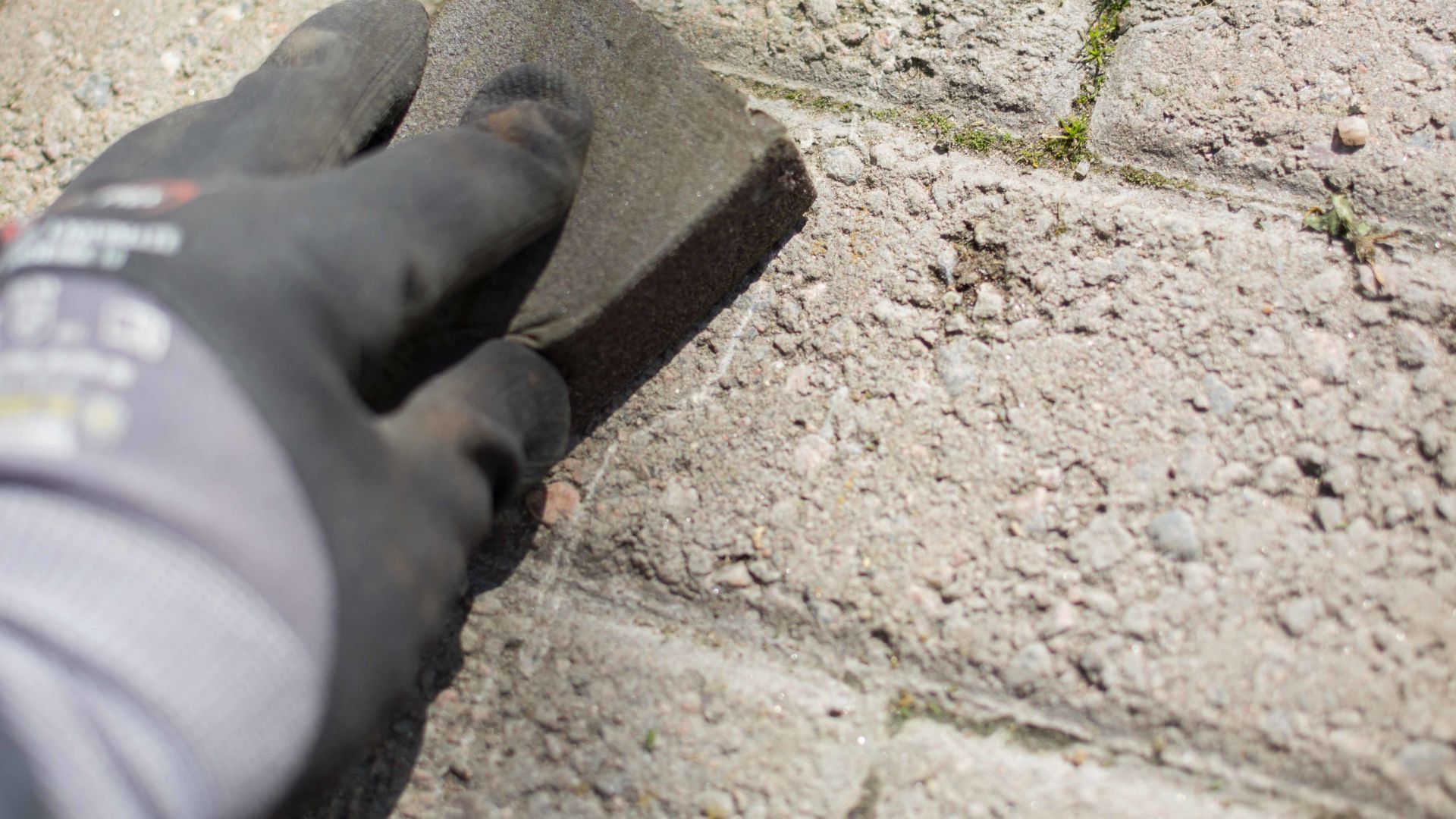24/09/2021
Technicians cleaning the vast parvis located in front of the Piazza del Duomo in Milan. Learn how to properly clean natural stones.
As a follow-up to my article from earlier this summer, I asked Nicola Capomasi from Thor & Partners to share is knowledge on cleaning solutions and to give us suggestions on how to maintain the natural stones’ appearance.
Natural stone, marble and granite are mainly used for terraces and building façades, as well as for the entrance and patios of houses in your neighbourhood. Because of its origin, granite is generally adapted for flooring, while marble and other natural stones are more suited for vertical or decorative purposes.
You probably noticed those types of materials all around your city or in other countries. As much as they are durable, these materials can be affected by time, excessive humidity (mould development), water absorption (accelerated degradation of certain stones due to freezing and thawing cycles), de-icing salts (or salt spray in coastal areas), air pollutants, organic stains (oil or grease), accidents (food spills) or natural events (fall leaves stains, animal droppings, etc.).
Horizontal surfaces are more prone to these issues and that is why they need to be protected with a penetrating sealant (also called saturating sealants). Some of these products might enhance the colour of the stone without leaving a film on the surface. These sealants should not only limit water absorption, but they will allow the moisture previously absorbed under the rock to escape as well.
Applying a sealant to vertical surfaces can also behelpful. However someone with great experience should make the application since the product can leave drips.
A high-quality sealant will not only prevent stains from penetrating in the stone but will provide a “reaction time” as well, that is why stains should be cleaned as fast as possible.
Interesting facts!
Most stains that penetrated a stone can be removed. Essentially, if they get in, they can get out! Time and effort will vary according to the type of stain, the amount of time the stain was in contact with the surface and the stone type.
Most Common Stains
Dead leaves or air pollutant stains
If these stains are on the surface, the first thing to do is attempt to remove them by washing the surface with warm water and a neutral soap. Avoid using a brush, as this could push the stain further in the stone.
It should be noted that hot water has a much higher degreasing power than cold water and is usually sufficient to remove stains from a well-sealed surface.
If stains are discovered on stone surfaces that have not been previously sealed, or if the stains have finally penetrated through the sealant. Specialized products are required. Characteristics to consider when selecting such products that may solve these problems are the type of stone, the type of surface and the type of stain.
Most Oil and Greases
In this case, you will need an absorbing paste to remove the stains. The number of applications depends on the depth of the stains. Two applications are usually sufficient. However, the time before cleaning should be very short.
Animal Droppings, Dead Leaves , Coffee and Ink Stains
These stains are considered as natural and can usually be removed with sodium hypochlorite based alkaline products (also know as bleach) or with hydrogen peroxide. Either way, you will need to rinse with fresh water thoroughly as the last step of the cleaning process.
Salt
Salt can be produced naturally, after a rise of moisture (when coming from deep in the ground, this phenomenon is called capillary rise of ground moisture), salt spay (common in coastal regions) or artificially, when using de-icing salt.
Pierre Hébert, PA LEED AP BD+C _ CTR-CSC / RTC-DCC
Application Field Manager, SIKA Canada
Nicola Capomasi
President and Owner of Thor & Partners.
This text was written jointly by Pierre Hébert and Nicola Capomasi.
In order to remove salts resulting from rise of moisture, paper pulp and demineralized water can be used. The paste is applied on the surface and left to air dry for at least 48 hours before removing and rinsing.
Speaking of de-icing salts, first this chemical should never replace the use of a shovel to remove snow! In other words, de-icing salts are used to melt ice, not snow… Therefore, it is important to be careful and to use the proper amount of de-icing salt on your surface. Secondly, you should try using calcium and magnesium acetate in place of salt. Finally, when spring comes, you should eliminate dry salt (by using a broom for instance) and you should never use chemical cleaning products (such as acid-based cleaners).
Rust Stains
Rust caused by external agents can usually be removed with acid-based products (however, these products are not suitable for marble or a few types of natural stones because they can remove the stone’s sheen, etch or discolour the surface.
If rust is coming from the iron in the material, unfortunately it is impossible to remove.
Veins in marble, granite and quartz can contain iron and stains might appear when the veins are in contact with rain, snow or in wet conditions. In order to prevent these stains from occurring, surfaces should be protected with a penetrating sealant.
Here is what YOU SHOULD NEVER DO!
- Never use acid-based products on marble or natural stones.
- Never use a surface sealant. While these can be a better protection compared to penetrating sealants, they can trap moisture in the stone. It can get tedious to refresh this type of finish, you will need to remove the old sealant to apply the new one. Finally, some of these surface sealants can reduce slip resistance.
- Never mix different types of chemicals.
Now, what should you do?
- Use a penetrating sealant on natural stone as soon as the installation is completed. It is important to note that this protection alone is not enough. A regular maintenance specific to the stone type and the location should be done. Indeed, a proper maintenance and a regular sealant application (preferably at the end of summer and after a deep clean) will prolong the life of surfaces and prevent unwanted degradation, while preserving the appearance of the surface. Didn’t you choose this specific stone for the look? Therefore, a sufficient protection and regular maintenance are highly recommended!
- Always read and understand the product data sheet carefully and ask the seller for clarification if necessary.
- Be especially wary of information from random, unprofessional videos on the Internet. Every stain and every surface are different.
- Always test the product on a small discrete section to see how the product will react and to confirm the desired results.
When should you call a restoration specialist?
In addition, these people are more than happy to share professional tips for your specific natural stones to help you avoid problems.

